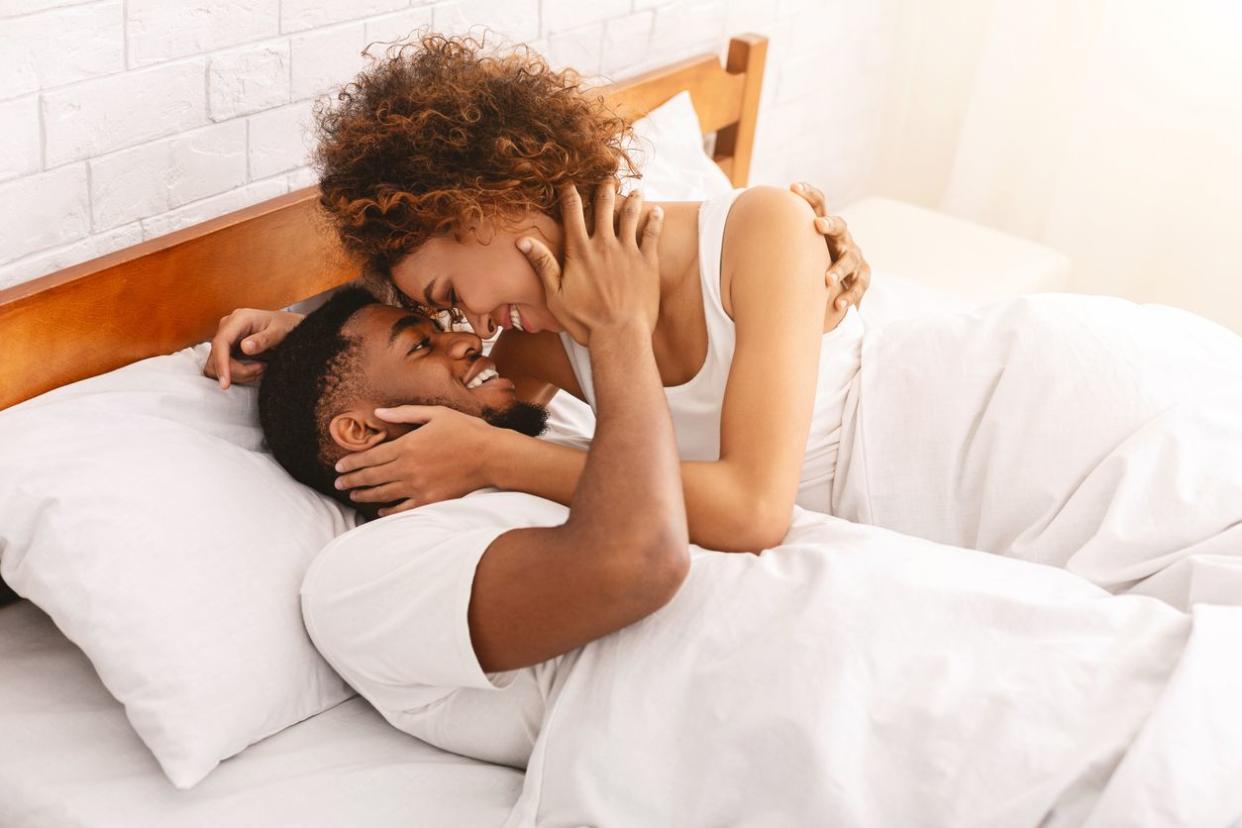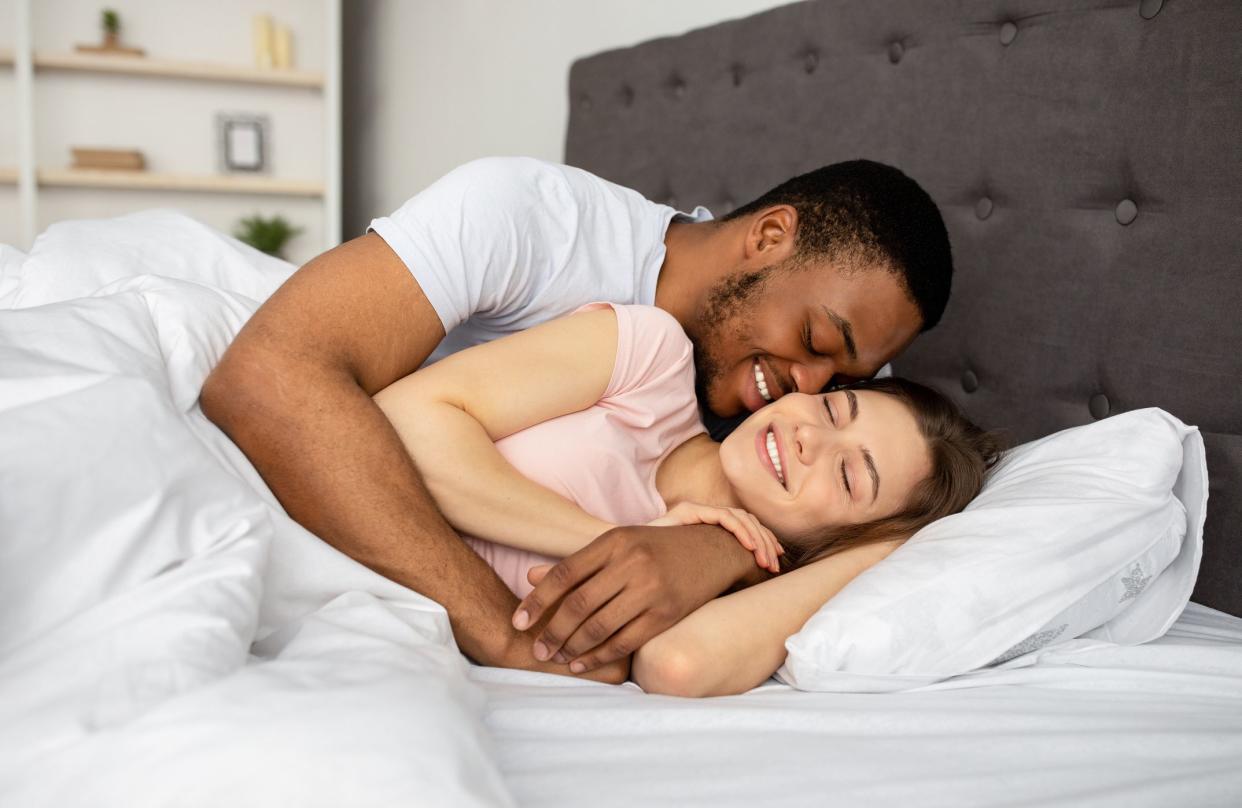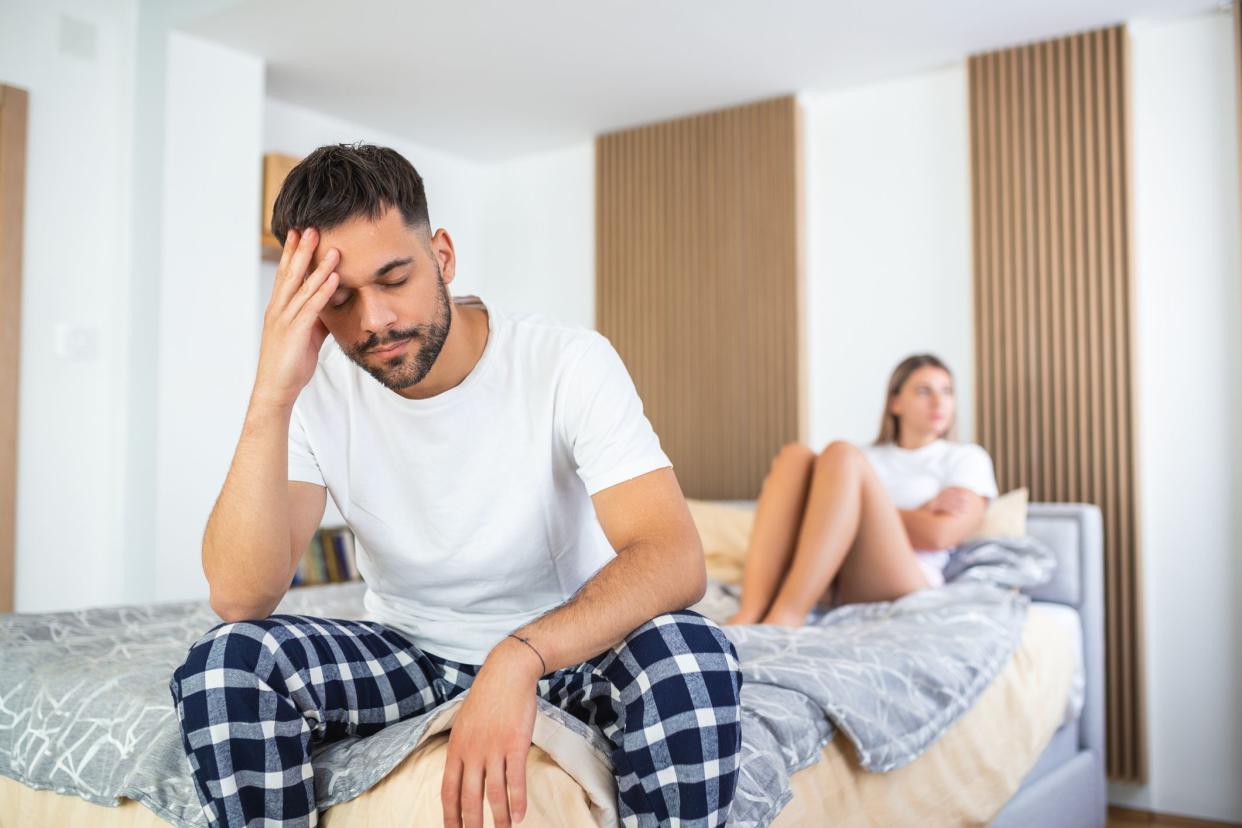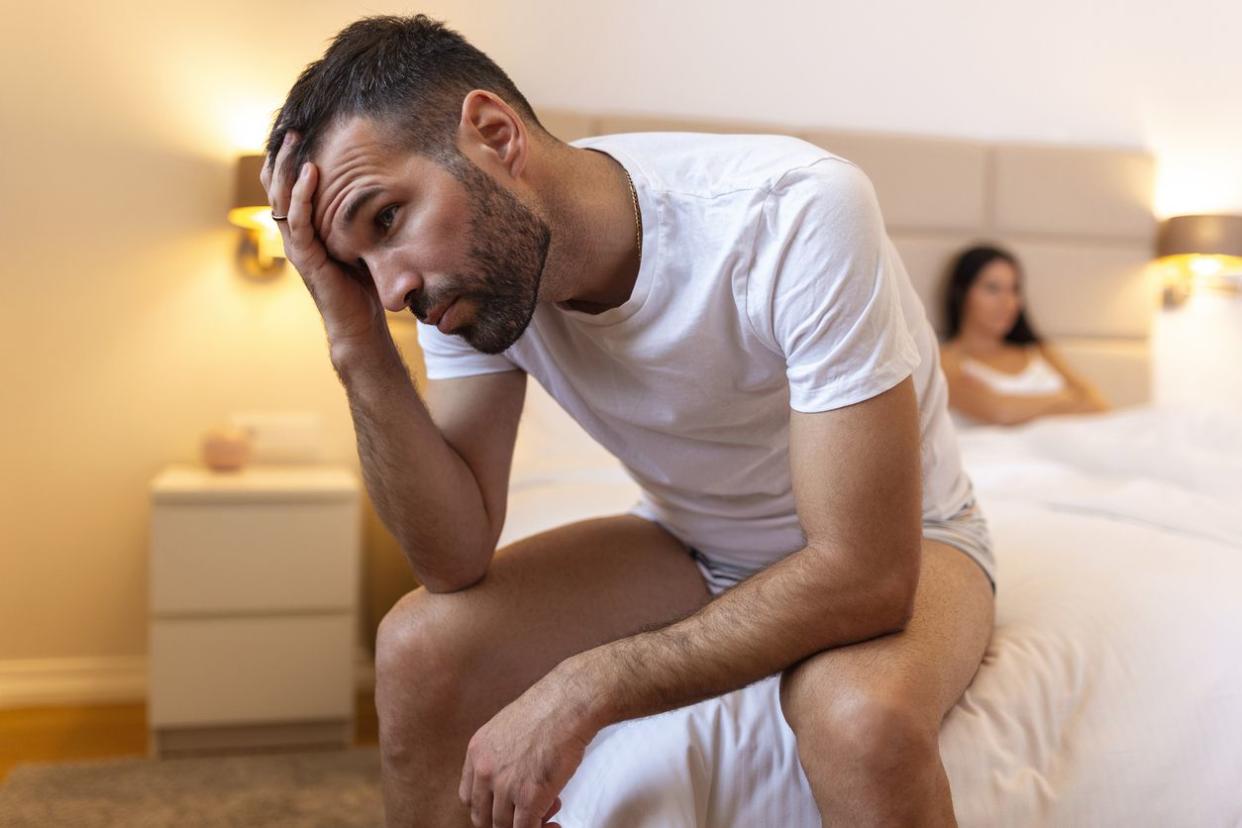How to Get Turned On: 7 Tricks
This article was reviewed by Kelly Brown MD, MBA.
As a hormonal teen, getting aroused was a piece of cake. You were probably more likely to wonder how to prevent it, instead of looking for tips on how to get aroused more easily.
You may not want to learn how to get aroused like a teenager again, but if you can’t remember the last time you were in the mood for intimacy, you may need some support to get your engine running again.
First, you’ll need to figure out if there’s an underlying health issue driving your libido down. Low testosterone, mental health disorders, and chronic health conditions can all contribute to a low drive.
Once you find the cause, you can explore some tips and techniques to make arousal possible again. We’ve shared a few ideas below, which includes taking the pressure off intimacy, spending more time on warming up, and beyond.
Arousal difficulties can happen for many reasons. But luckily, there are plenty of tactics you can try if you’re finding that your “wants” and your “cans” aren’t lining up like they used to.
Before discussing tips on how to get aroused, we’ll explain some things about arousal you may not know. We’ll also cover reasons you might be struggling to get aroused and how you can address these underlying issues.

What Is Arousal?
There are two equally important parts of how you get aroused: the physiological and the psychological arousal responses. Research has shown that arousal is a complex and multifaceted phenomenon involving both physical and psychological components.
The physiological state of being aroused in men is characterized by, well…being aroused.
However, psychological arousal doesn’t necessarily entail intimacy function — it may only be excitement or stimulation from images, fantasies, or touch. This is more often referred to as desire.
Physical arousal isn’t just a hard/soft question, though — it can be characterized by autonomic nervous system activity, including:
-
Increased blood flow to the privates
-
Increased heart rate and muscle tension
By the way, your autonomic nervous system controls many voluntary and involuntary behaviors. It’s also responsible for the “fight-or-flight” response, which triggers the release of adrenaline, and the so-called “rest-and-digest” response, which causes relaxation and arousal.

How to Get Aroused On: 7 Tips
Feeling less aroused than you used to be isn’t always a problem — the problem is when you want to be in the mood but just aren’t.
We hate to let you down, but if you’ve been Googling “how to be aroused” or “how to make yourself aroused” and keep coming up short, there’s a good reason. There’s no one-size-fits-all guide to getting turned on because it’s a personal experience. Between kinks, fantasies, what you’re attracted to, and who you’re attracted to, chances are you have a very specific, tailored set of requirements for what gets you going. Learning how to turn yourself on means knowing what feels good in your own body.
But if you need some help to get started, here are a few tips:
-
Take the pressure off
-
Set the scene
-
Explore adult content
-
Spend more time on warming up
-
Take care of your health
-
Try new positions and toys
-
Communicate
Let’s look at how to put these into effect in your own life to enhance your health.

1. Take the Pressure Off
First of all, nobody’s good at getting aroused under pressure. Whether you’ve been stressing about being “ready to go” or “in the mood,” the essential first step is to lower the stakes.
Remember, intimacy is about having a good time. And if you’re engaging your fight-or-flight response by becoming anxious, you won’t have the mental space to get aroused on.

2. Set the Scene
Learning how to get aroused is all about setting the scene. No, you don’t have to light candles and spread rose petals on the bed, but consider the effect that mood lighting, music, and a refreshing beverage can have on your ability to relax.
Treating your partner to a romantic retreat in a room with dim lights and no screens might help turn them on. Beyond that, the change of scenery can affect your own state of mind — like the difference between how you feel in your home versus the DMV office. Which one of those sounds better?
You can also set the scene much earlier in the day by texting your partner and fantasizing together to get excited about what lies ahead.

3. Explore Adult content
We’re not telling you what adult content to look into, but if you’re having arousal troubles, consider visual stimuli to see what you can get stirring.
There may be fantasies you’ve yet to explore or acts you’re curious about that can send your imagination (and other parts of your mind and body) into a frenzy. But keep in mind that adult content is a double-edged sword. Some men can develop issues if their intimate response has become reliant on it.

4. Spend More Time On Warming up
The good news for men who struggle with arousal is that warming up exists. Most guys may wrongly assume that when the clock starts on intimacy time, they have to be ready for penetration.
If neither your mind nor your privates has shown up to the party, you can still get things going by touching, kissing, teasing, or massaging your partner. Sometimes, arousing someone else is enough to arouse yourself. Or you can explore mutual interaction to enjoy simultaneous stimulation.

5. Care for Your Mental and Physical Health
Sadly, the most boring item on this list is also the most important and neglected one. While mood-setting activities and X-rated content may help some guys, the reality is that arousal problems may signal a mental or physical health condition you need to discuss with a healthcare provider or therapist.
If you think this may apply to you, we’ve covered some of the physical and psychological causes of ED below.

6. Try New Positions and Use Adult Toys
Shaking up the routine with something new can work wonders for your arousal and your partner’s satisfaction. New positions are a great way to find different sensations that may be equally or more pleasing to both people.
Research has shown that most women find more satisfaction in positions where they can get additional stimulation, and it’s even easier to explore with plenty of lubrication.
You can also enhance intimacy and warming up with adult toys. If you didn’t know already, adult toys aren’t just for women. Ask your partner to explore your erogenous zones with a toy and then reciprocate the gesture. You can do so much before the main event, so take your time and enjoy.
These are just a few of the many ways to have better intimacy.

7. Communicate
Obvious? Sure. Overlooked? Frequently.
Communication is the thread that ties all other items on this list together. It’s how you find out what turns you and your partner on, ask for what you want, and ensure you’re providing what they need.

Why Can’t I Get Aroused? Not getting aroused could very well be due to a lack of chemistry or connection with your partner. But for many people, a lack of arousal is caused by something else — something treatable. There are several potential reasons for
Not getting aroused could very well be due to a lack of chemistry or connection with your partner. But for many people, a lack of arousal is caused by something else — something treatable.
There are several potential reasons for why you may have a low libido. They include physical issues like low testosterone and mental health issues like depression. Some people also lose their desire for intimacy when taking antidepressants.
Having a problem like ED can also mess with your drive, too. If you have this dysfunction, you may be unable to get or maintain a full arousal, which can lead to arousal issues.
The following physical causes may contribute to ED:
-
High blood pressure
-
Cardiovascular and neurological diseases (like heart disease)
-
Multiple sclerosis (MS)
-
Chronic inflammation due to diabetes
-
Parkinson’s disease
-
Metabolic syndrome
While most of these physical causes of ED affect your physical arousal, the following psychological causes can also prevent you from getting aroused:
-
Depression and low self-esteem
-
Stress and anxiety at work, home, or in your relationship
-
Performance anxiety
-
A loss of interest in intimate activity
-
An out-of-control adult content habit
-
Poor diet and exercise habits
-
A lack of attraction to your partner
As you might already have noticed, many of these problems are hard to diagnose without the support of a healthcare professional. The same goes for treatment.
If you think you might have one of the above issues (or aren’t sure at all), make an appointment with a healthcare professional or consider therapy as the next step.
Let’s talk about the options they’ll offer you.

What to Do If You Can’t Get Aroused
Depending on what specific issues need to be addressed to give you a healthy life, your road to arousal may be shorter or longer. But here’s a brief overview of how the major problems should be dealt with.
ED
In the modern era, ED is a comically easy problem to solve. Diet and exercise can make major improvements to your health, and medications can help with the physiological causes of ED.
ED medications won’t increase your libido, but they can help you get aroused if ED is compromising your drive. The most common drugs are phosphodiesterase 5 inhibitors (PDE5 inhibitors). They increase blood flow to the privates, which promotes getting aroused if you’re already in the mood.
There are a number of FDA-approved prescription ED pills available, including:
-
Cialis (tadalafil)
-
Levitra (vardenafil)
-
Stendra (avanafil)
-
Viagra (sildenafil)
Talk to a healthcare professional to find out if these medications might be a fit for your needs.

Low Testosterone
Low testosterone levels have been associated in studies with an inability to get aroused, as well as a total lack of interest in intimacy. Low T can be a result of various underlying causes, from pituitary disorders to problems with the prostate.
To address hormone problems and improve function, talk to your doctor about hormone replacement therapy and see what other options are available.

Mental Health
Some days, even the most intimately accomplished men just don’t feel like it. But a pattern of indifference to intimacy or a lack of desire can signal an issue — and if it’s not due to low testosterone levels, it’s often a question of your mindset.
Low self-esteem, performance anxiety, depression, and other mental health conditions can make connecting with your partner difficult. Getting treatment for mental health issues in the form of therapy or medication can help you deal with those problems and get your focus back in the present — and on your partner.
Yes, it may be the case that your lack of desire is wrapped up in another conflict. You may no longer find your partner attractive or have a deeper connection with someone else that’s making it difficult for you to perform.
A therapy professional can help you sort out your feelings. It may sound scary to face these thoughts, but it’s the best thing for everyone, including your partner.

Getting Turned On: A Final Word
Our intimate lives are complicated, and real life isn’t always as ideal as TV and movies would suggest. Many things can prevent you from being turned on, and lots of hurdles can prevent your experiences from becoming legendary — or from happening at all.
If this sounds familiar, here’s what you need to remember to start getting back on track with your intimate life wellness:
-
Arousal is both mental and physiological, and it’s possible to get aroused without being “turned on.” Integrating new mental and physical practices into your intimate life may boost your libido.
-
There are many ways to get in the mood. Try everything from audio Adult content and stories to toys and warming up to see what works.
-
If romantic acts don’t clear your mental block, it might be time to talk to a healthcare provider or mental health professional. You may be struggling with ED, performance anxiety, or hormonal imbalances, which are all treatable.
Related: 6 Tips for Dating a Woman with High Libido
Related: Can ADHD Affect Your Performance in the Bedroom?
This article originally appeared on Hims.com and was syndicated by MediaFeed.org






